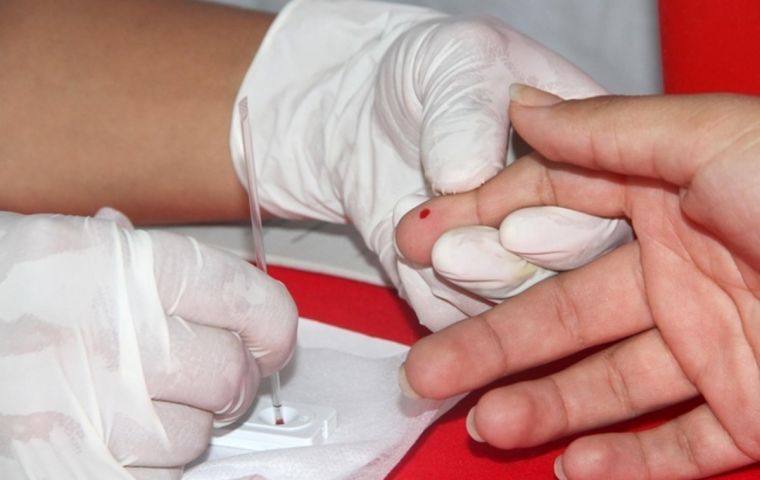MercoPress. South Atlantic News Agency
Chile: HIV cases 7% up in one year

Chilean health authorities have reported 644 deaths associated with the human immunodeficiency virus (HIV) in 2021, while some 84,000 people are estimated to be living with the disease in the South American country. According to the Institute of Public Health (ISP), 5,401 infections were confirmed in 2022 with the highest rates of infections detected in the regions of Arica and Parinacota, Tarapacá, and Antofagasta. Chile's Health Ministry (Minsal) points out that the figures are consistent with the increase in testing.
The data for 2022 represents a rate of 25 cases per 100,000 people, a 7% increase from 2021 and 13% from 2020, when due to the Covid-19 pandemic restrictions people were tested less frequently, with 27,451 fewer tests performed, a 50% drop from 2019. According to the ISP, the highest rates were observed in the 25-34 age group, representing 40% of the total new cases. Among people aged 35 to 49, 1,518 new infections were detected. Men represent 65 cases per 100,000 inhabitants and women, 8.9.
“The important thing is that from now on we have to increase very significantly the testing and self-testing that is already approved. This way we reach the population that is not going to consult. It is important to reduce the gap between people who know their diagnosis versus those who do not, and that will allow us to diagnose quickly and start treatment in time,” Hospital Clínico Universidad de Chile HIV Director Alejandro Afani said.
Self-testing “requires a small blood sample and people can do [it] at home, just as they do with the Covid-19 or the pregnancy test,” Universidad Autónoma de Chile Medical School Director Esteban Cortés explained.
Afani insisted that “there is a decrease in the perception of risk” while “in Chile, there is no structured sex education in schools and this has an impact on the lack of self-care and responsible sexuality, and this has a greater impact on the younger population. We must also add that young people have sexual activity under the influence of alcohol and drugs.”
“These higher rates of new diagnoses are in accordance with the strategies promoted by the Minsal which have allowed to increase and optimize access to the test in these regions, as we know that a timely diagnosis is key,” Minsal HIV expert Health Ministry Leonardo Chanqueo argued.
According to Sylvia Riquelme, director of the Clinical Sciences Department of the Faculty of Medicine of the University of Tarapacá and a specialist in public health, it is difficult to determine why the rates in the area are high, but she speculated migration could be one of the reasons.
Cortés concurred: “In the north, we are seeing a large number of immigrants and the health services are attending them. Most of them are Venezuelans who were already diagnosed, but in their country, they did not have access to therapy. Then, when they arrive, the ISP confirms their diagnosis.”




Top Comments
Disclaimer & comment rulesCommenting for this story is now closed.
If you have a Facebook account, become a fan and comment on our Facebook Page!